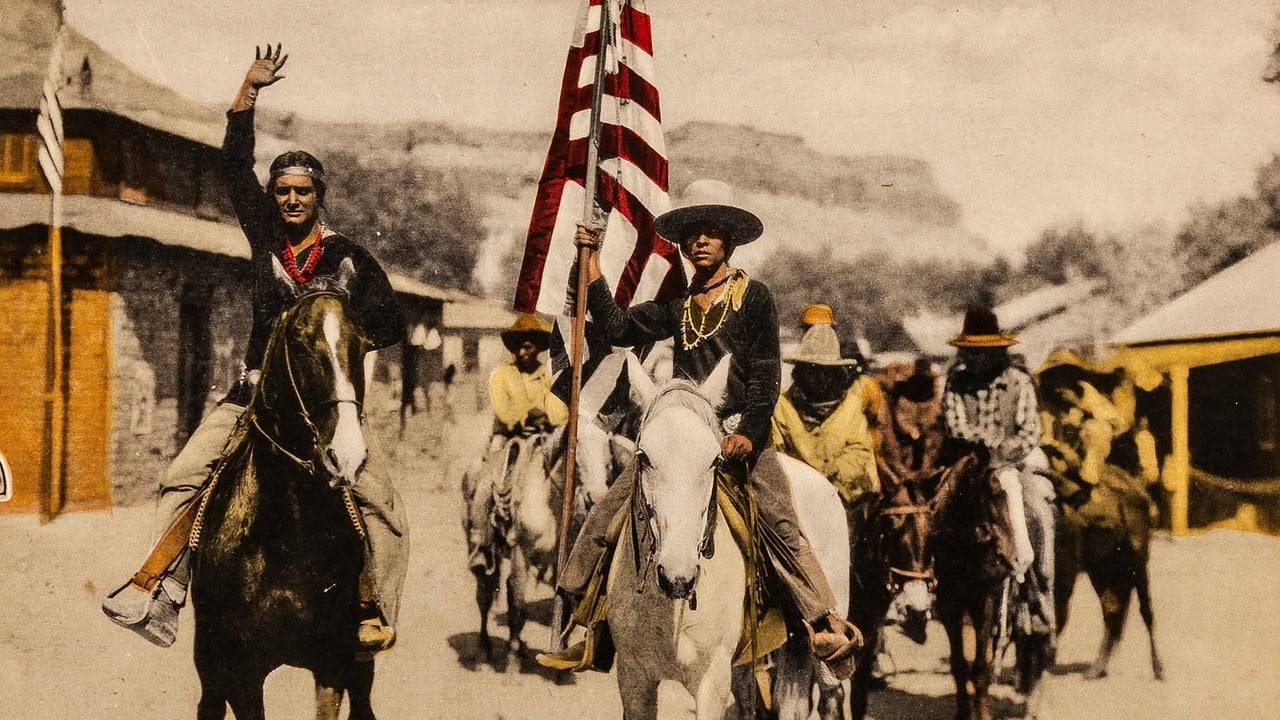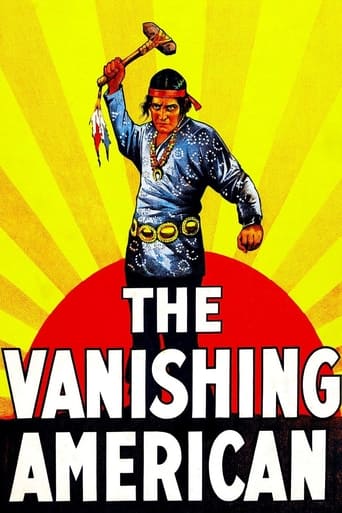

Masterful Movie
... View Morejust watch it!
... View MoreStory: It's very simple but honestly that is fine.
... View MoreAmazing worth wacthing. So good. Biased but well made with many good points.
... View MoreAlthough the acting is good and the landscape beautiful, the film does not portray history correctly or respectfully. I would not share this with students, unless it was to show how negative stereotypes are propelled forward with portrayals such st this.The cliff dwellers were indeed not conquered. The depictions of lazy and slow minded people bordered on insulting. I realize that this was made during a time when dominant belief prevailed, but it does not make the film right or worthy of the high reviews it has received.On a more positive note, the film with hilarious in its inaccuracy and intent, which I believe was beyond understanding at the time.
... View MoreDirector George B. Seitz was known more for the Pearl White serial "Plunder" until "The Vanishing American". Instead of portraying him as the usual plundering savage, the screenplay by Ethel Doherty (from a Zane Grey novel) tried to correct a lot of the myths about the Indian's warrior standing. Typical of the silent epic (in general) it had a mighty sense of history as the story was played out across a vast panorama beautifully photographed by C. Edgar Schoenbaum and Harry Perry. Titles refer to "the mighty stage" and the movie looked at life in grand terms but also with humanity. "The Vanishing American" was also the last Western feature for almost 2 decades to take a sympathetic look into Native American culture.After a very interesting prologue showing how the different peaceful cultures (ie Cliff Dwellers) were gradually overcome by the Indian fighters and warriors. They thought if they could only capture a White God (horse) they would be supreme kings, they had never seen a horse until the arrival of the white man. When the Spaniards used their guns, the Indians felt they (the Spaniards) were in league with the Gods and were eventually conquered and forced to live on reservations."The Vanishing American" defied stereotype, questioned tradition and was ahead of it's time. Hooper, the Indian Agent of Mesa is too caught up with bureaucracy and paper work to effectively help the Indians so it is left to his assistant Booker, and as played by Noah Beery, he is a villain of the first order. Blatantly lying about wanting to be the Indian's friend, he only wants to get in pretty teacher Marian Warner's (Lois Wilson) good books. Apart from old timer Bart Wilson, she is the only person who wants to understand the Indians and has even bothered to learn their language. There is also an "understanding" between her and Nophaie (Richard Dix), the leader of the tribe. Richard Dix plays Nophaie with dignity and believability, even when the story becomes a bit bogged down with biblical piety (he starts to question his native God as "foolish" putting his trust in the New Testament given him by Marian).The film shows the Indian as being truly mistreated, right through the ages, although as the story progresses it becomes trite as it shows the Native American at his noblest when he is trying to mimic the white man - joining the U.S. Army to help fight the War or becoming emotional when Marian told him he should be proud to be an American. When they return to the reservation after the War, things have changed for the worst, Booker is in charge and he and his henchmen have pilloried the land - and to make matters worse, Booker tells Nophaie that Marian has married recruitment officer Earl Ramsdale (Malcolm MacGregor)!!! That's not true and in a surprising twist, that would have been shocking for it's day, Marian comes back to the reservation to pledge her love to Nophaie.Shannon Day, a Cecil B. DeMille protégé, whose career did not survive the coming of sound played the tragic Indian maid. I am also sure that Richard Dix became involved in the Native American cause after his performances in this movie, "Redskin" and "Cimmaron" made him more aware.
... View MoreWhat a great surprise this movie is. This silent is a sleeper, a classic, wonderful film that does all the great things a soundless movie is capable of doing. Most importantly, this may be one of the most genuinely sympathetic movies ever about American Indians, because it does so without preaching, without portraying them as these mystical, magical humans, that, because they do things like use every piece of the buffalo they kill, are somehow better than all of us. You know the stereotype. It seems like Hollywood has never found a smart middle ground when it comes to portraying Indians: they are either savages or god-like innocents, but never normal. In The Vanishing American, the Indians are just regular people, largely pushed and pulled by fate and the inexorable spreading of the white way of life.Here, we see the hurt inflicted on Indians in small ways, like a farm being taken by the Indian Agent from one man while he is away at war, or a tribe member taken to be a servant of the Agent, and dying in his service, and the pain this causes his survivors; we feel the sadness of the characters without being forced through a lecture.At the same time, the movie is epic in nature, taking us through several millennia of time, and staging those massive battle scenes containing hundreds of extras that the silents, to me, do more effectively than the talkies ever could (perhaps it is the inherently haunting nature of all silent film that makes it seem so).Richard Dix is acceptable as an Indian leader, but Noah Beery steals the show, playing one of the slimiest and sleaziest villains ever; he even kicks an Indian sitting at his office's doorstop, and not once, but twice, to get him out of the way!This movie also takes patriotism very seriously; tears come to the school teacher's eyes when her class of young Indians says the Pledge of Allegiance. Religion, too, is treated with seriousness, as modern Hollywood never does; Christianity and the New Testament are held with reverence, but again, not too preachy.I highly recommend this film to all silent film affectionados, as well as those interested to see a unique and oddly progressive film about Native Americans that was made in the 1920's.Some small thoughts: (1) Early in the film, some Indians meet up with Spanish Conquistadors. The Indians are much more naked than we normally see them; No clothing at all up their hips: a little unnerving! (2) During an early battle scene, an invading tribe is attacking the cliff dwellers; the invaders climb tall ladders to reach the upper ledges. At one point, several ladders full of climbing invaders are seen; one of the ladders is pushed back, and a ladder full of invaders falls backwards, the men on it doomed to fall to their presumed deaths; if you look closely, though, the men on that ladder are clearly dummies.(3) When Kit Carson's soldiers first hurry off to battle, the first carriage we see pulled by horses and supporting a cannon clearly loses a wheel as it flies down a hill. (4) Racial incongruity #1: The white Richard Dix, with make-up on to darken his features to make him look like an Indian, wearing a soldier's World War I uniform and fighting in the trenches. Racial incongruity #2: an Indian Chief introduced in a title, played by Bernard Siegle! (5) When the Indian children in the school recite the Pledge of the Allegiance, they have their arms extended out in a manner that to modern eyes may seem like a fascist salute; is this how they used to do it? (6) At one point, Richard Dix is standing on one of the great stone arches of the American West, tossing feathers from his staff into the wind; the first feather he tosses is blown by the wind back to him, and sticks to his arm! He quickly swipes it away, though, and continues his scene.
... View MoreVanishing American, The (1925) *** (out of 4) Interesting drama from Paramount tells the story of Indians and how they fought to try and gain acceptance after having everything stolen from them. This film centers on Nophaie (Richard Dix), a man whose bravery leads the Indians into WW1 as well as fighting their battles at home. While this adaptation of Zane Grey's story isn't as great as one might hope, there are enough interesting bits here to make it worth sitting through. The film starts off with a nice prologue where we see various "forms" of people from the early caveman, to cave dwellers and then the Indian. These shorter sequences all look extremely good and especially the cave dwellers segment, which is real eye candy especially with the sets that really were built on cliffs. The entire look of this city makes you feel as if you're really there and this continues during the next sequence where we finally get to see the Indians and their early time here. We get some brief comic moments including their thoughts when they first see a horse but this soon turns to some battle sequences that are also well executed. I was surprised to see how graphic some of the violence was and this includes a scene with an Indian full of spikes through his body as well as another brutal scene with an Indian being shot and falling from a cliff. These early war scenes look extremely realistic as does the later one when Nophaie is fighting in WW1. Some could rightfully argue that this film's entire message of peace is pretty much wasted as the majority of the Indians here are played by white men with brown paint on. I think a lot of viewers today will see this and not even pay attention to the message here as they'll see it being double sided but it's important to remember when this movie was made and the fact that a lot of these message movies quite often appear just as racist as the film's their trying to go against. What really makes one scratch their head is the fact that this make up put on the actors is clearly melting during several scenes yet no one tried to touch it up to make it less obvious that we weren't seeing an Indian. With that said, Dix, Lois Wilson, Noah Beery and Malcolm McGregor all turn in fine performances. Each were believable in their roles with Beery clearly stealing the film and Dix coming off as a good lead even though he's be much better in 1929's REDSKIN. The biggest problem with the film is that it jumps around a bit too much and the love story itself is rather weak. The 110-minute running time could have been cut down without too much being missed. Movie legend would have one believe that John Ford discovered Monument Valley but that's certainly not the case as it's fully on display here. The images captured of it are truly breathtaking and these here are reason enough to sit through the movie.
... View More